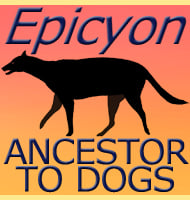Tomarctus
In Depth A relative of such genera as Aelurodon and Borophagus, Tomarctus is another one of the hyena-like ‘bone crushing’ dogs of the Miocene. This description comes from the attachments for powerful jaw closing muscles and short muzzle which means that when borophagine canids like Tomarctus bit on something, it was closer to the point … Read more
